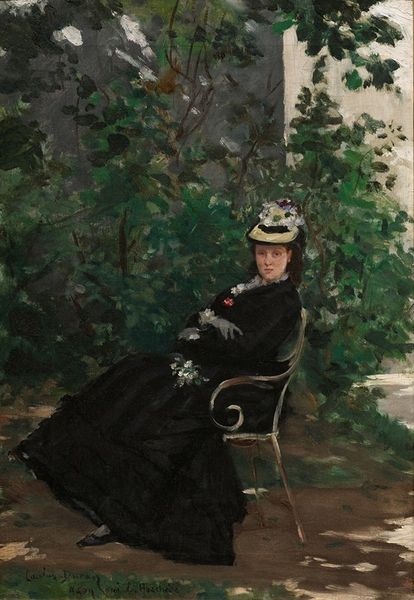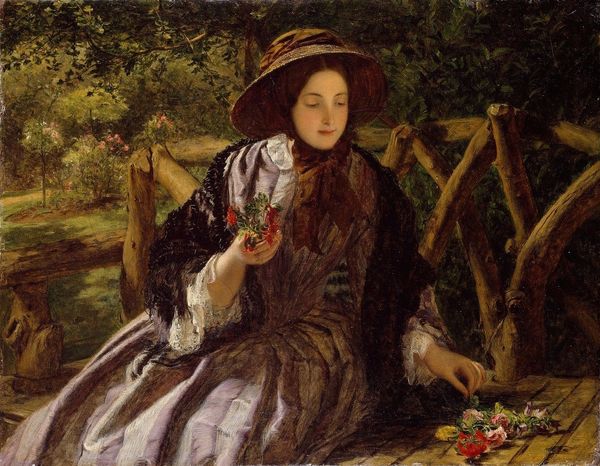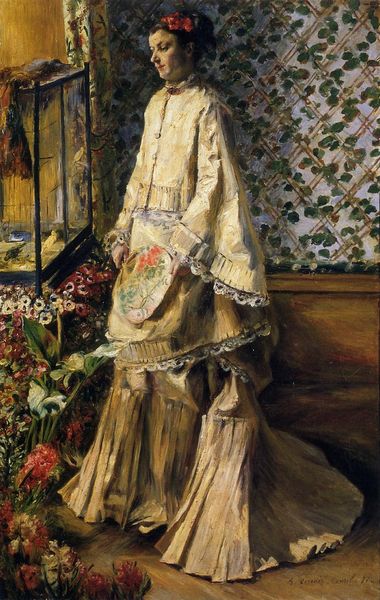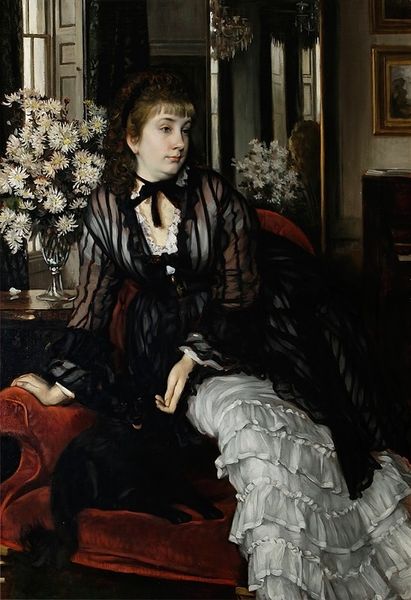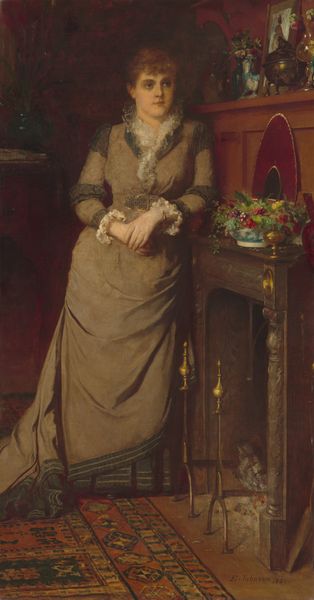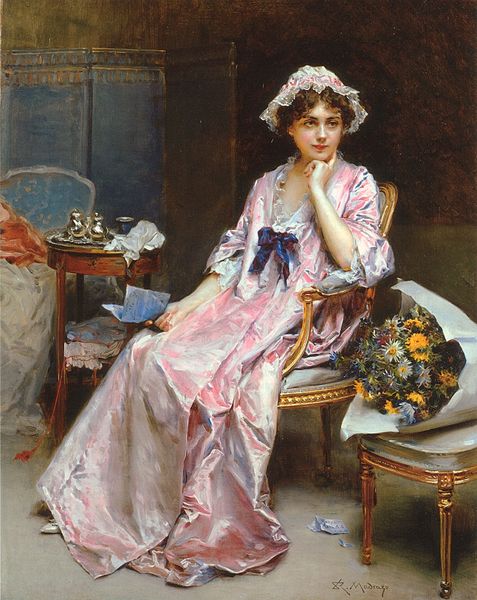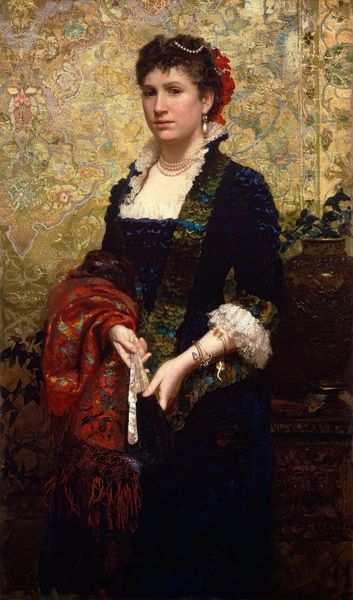
Copyright: Public domain
Editor: "In a Black Coat," painted in 1908 by Lovis Corinth using oil on canvas. It has such a somber, almost subdued, palette. What stands out to you about the artist's compositional choices? Curator: The painting's structure relies on contrasting textures and the tension between flatness and depth. Note how Corinth renders the woman's coat in broad, energetic strokes, yet flattens the background, positioning her almost as if against a stage backdrop. How does this affect your reading of the figure? Editor: It makes her seem… detached from her surroundings? Isolated, even. Curator: Precisely. The lack of deep perspective and the relatively undefined setting concentrate the viewer's attention on the figure itself. It's also intriguing how Corinth juxtaposes areas of intense detail, like the lace on her coat, against passages of near abstraction in the background foliage. Consider the effect of light across these textures and forms. Editor: There’s a distinct play of light across the lace, especially around the shoulders, but also a flatness in areas. I guess it enhances the focal point of the work, which is the subject. It creates an interesting, if slightly unsettling, dynamism, too. Curator: Unsettling is a very apt term. Do you find her gaze and her slight asymmetry further create a subtle but pervasive psychological complexity? How does this visual imbalance relate to the painting's emotional impact? Editor: I think that unsettling feeling may well come from her slightly crooked gaze, but the work's emphasis on texture really enhances its emotive strength. The details in the clothing evoke a mood more than anything else. I understand better the emotive role of texture now! Curator: Agreed. A focus on internal structures clarifies an artwork's core qualities, as Corinth's portrait embodies his psychological insights, achieved through striking compositional tactics and raw visuality.
Comments
No comments
Be the first to comment and join the conversation on the ultimate creative platform.

